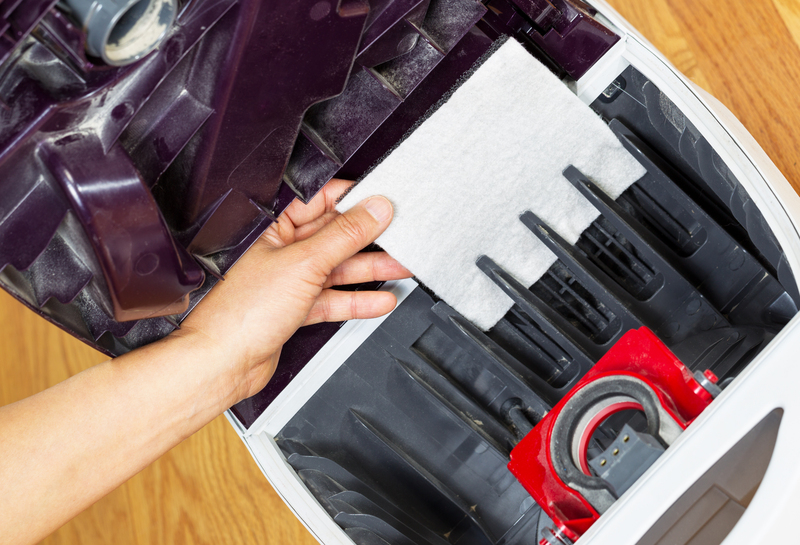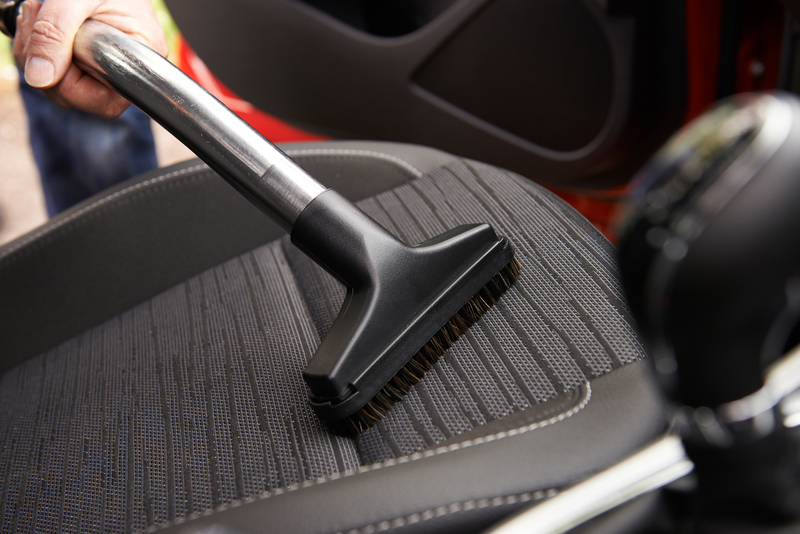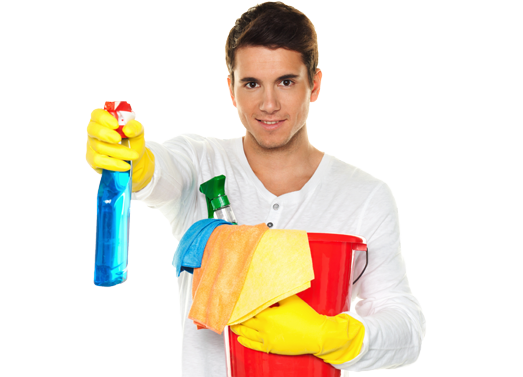Effortless Stovetop Revival: Remove Burnt-on Residue Like a Pro
Posted on 03/07/2025
Effortless Stovetop Revival: Remove Burnt-on Residue Like a Pro
Have you ever battled with stubborn, burnt-on residue that refuses to budge no matter how hard you scrub? Many home cooks find themselves frustrated by crusty sauce spills or cooked-on grease tarnishing the once-lustrous surface of their stovetops. Thankfully, you're not alone--and with the right techniques, an effortless stovetop revival is absolutely within reach.
Understanding Burnt-on Residue and Why It Happens
Before diving into stovetop cleaning tips, it's important to know what you're up against. Burnt-on stove residue is the result of food, oils, or liquids spilling onto a hot cooking surface, then solidifying and carbonizing as they're repeatedly heated. Over time, these stubborn stains bond tightly to the stovetop, making them a challenge for ordinary cleaning methods.
- Food particles (soups, sauces, etc.)
- Cooking oils and fats
- Sugar-based spills (jam, syrups, juices)
- Dairy products
- High starch residues (like potatoes or pasta water)
Caring for your stovetop is not just about aesthetics--prolonged exposure to residue can degrade your appliance's performance and create fire hazards over time.

The Risks of Neglecting Burnt-on Stovetop Residue
If you let spills sit and burn onto your stove surface, you're not only looking at an unpleasant kitchen, but also at risks such as:
- Reduced cooking efficiency (since heat may be retained or blocked by residue)
- Health risks from repeated exposure to burnt food particles
- Long-term damage to glass, ceramic, or enamel stovetop finishes
- Potential fire hazards with large, carbonized buildup
That's why it's smart to tackle even the earliest stains quickly--ideally, every time you cook.
Essential Cleaning Supplies for Burner-top Revival
To remove burnt residue from your stovetop like a pro, you need the right tools and ingredients. Here's a simple checklist to have on hand:
- Non-abrasive sponges or microfiber cloths
- Plastic scrapers or silicone spatulas
- Baking soda (for its gentle abrasive effect)
- White vinegar (dissolves minerals and softens grime)
- Dish soap (grease-cutting formulas work best)
- Spray bottle (for homemade cleaning solutions)
- Soft-bristle brush
- Commercial stovetop cleaner (for heavy-duty cleanups)
- Paper towels or old rags
With these basic supplies, you'll be well-equipped for both daily maintenance and deep cleans.
Step-by-Step: Effortless Stovetop Revival
1. Let the Stovetop Cool Completely
Safety first: Never start scrubbing a hot stovetop as you might injure yourself or worsen the stains by spreading them. Wait until the surface is completely cool before touching or applying any liquid.
2. Remove All Removable Parts
Take off burner grates, knobs, and drip pans. Soak these in warm soapy water to loosen grease and gunk while you work on the surface itself.
3. Wipe Away Loose Debris
Start by wiping away loose crumbs and particles with a damp cloth or paper towel. This helps you focus on areas with actual burnt-on gunk.
4. Apply a Baking Soda Paste
Mix a thick paste of baking soda and a splash of water. Apply it generously to the burnt-on residue spots, pressing in so it fully covers the stain. Let it sit for at least 15-30 minutes--longer for really tough spots.
5. Spray with White Vinegar
Once your baking soda paste has rested, fill a spray bottle with white vinegar and mist it over the paste. This combination will bubble and fizz (a sign the chemical reaction is working to lift grime).
6. Gently Scrub Residue
With a non-abrasive sponge or a plastic scraper, gently scrub the softened burnt areas. Never use steel wool, harsh pads, or metal scrapers, especially on glass or ceramic stovetops, as they can scratch the finish.
If necessary, repeat the paste and vinegar process as needed for thick or older stains.
7. Rinse and Wipe Thoroughly
Use a clean damp cloth to remove all traces of the cleaning solution. Dry the surface thoroughly to prevent water spots.
8. Clean and Replace Burner Parts
Scrub grates or drip pans soaked earlier, dry them fully, and replace them onto the stovetop.
Professional Tips for Different Types of Stovetops
Gas Stovetops
- Check for clogged burner ports after cleaning and clear with a toothpick if necessary.
- Use a vinegar-soaked rag to polish stainless steel.
- Always keep the area around igniters dry to avoid malfunction.
Electric Stovetops (Coil and Glass)
- Lift and clean under coil elements.
- Never submerge electric components in water.
- For glass or ceramic, use a soft plastic blade to lift stuck-on foods delicately.
Induction Cooktops
- Use only non-abrasive cleaners to avoid scratching the glass top.
- Dry thoroughly after cleaning to prevent water stains that can interrupt the sensor function.
- Never pour water directly on the surface; always apply with a spray bottle or cloth.
Natural Solutions for Stovetop Revival
If you prefer eco-friendly cleaning options for burnt-on residue, harness the power of these natural household staples:
- Lemon juice: Its acidity dissolves mineral deposits and breaks down grease. Apply freshly squeezed juice to the stain and let sit before scrubbing.
- Baking soda and hydrogen peroxide: A mixture of these can tackle even blackened, charred spills on enameled or stainless stovetops.
- Salt: As a gentle abrasive, salt helps scrub burnt spots away when combined with vinegar or lemon.
Commercial Cleaners vs. DIY Solutions
Sometimes, homemade methods aren't enough, especially for heavy-duty stains or aged residue. Professional stovetop cleaners are formulated to dissolve grease and carbon deposits quickly. Look for products labeled "safe for glass/ceramic" or "non-scratch." Always follow manufacturer instructions and test on a small area first to ensure compatibility with your appliance.
When to Use Heavy-Duty Products
- If stains are more than a few days old and have baked through multiple cooking sessions.
- When residue covers a large portion of the stovetop, or grease has solidified in hard-to-reach areas.
- With persistent discoloration on stainless steel or enamel.
How to Prevent Burnt-on Stovetop Residue
Strategies for an effortlessly clean stovetop:
- Wipe spills immediately: The best way to prevent buildup is to tackle sticky messes as soon as they happen (once the surface is cool).
- Use splatter guards: When frying or simmering sauces, these simple covers keep your stovetop protected.
- Deep clean weekly: Set a reminder to perform a thorough cleaning with baking soda and vinegar once a week--even if it looks clean.
- Keep a microfiber cloth handy: Wipe down surfaces daily for easy maintenance.
- Inspect regularly: Check under grates and pans for hidden stains that could carbonize under heat.
Common Mistakes to Avoid
- Using steel wool or abrasive pads. These scratch most stovetop surfaces, making them more likely to stain in the future.
- Allowing liquid to soak into electric components. This can short-circuit burners or cause shock hazards.
- Scrubbing too soon. Let the cleaning agent soak in to minimize elbow grease.
- Neglecting to dry the surface. Moisture can cause rust on metal parts or encourage water spots.
- Using a dirty cloth or sponge. This only transfers grease back onto the stove, defeating the purpose of cleaning.
Frequently Asked Questions About Stovetop Revival
Can you clean burnt stove residue without chemicals?
Absolutely! Baking soda, vinegar, lemon juice, and salt are all natural agents that, when combined with heat and a little patience, can remove stubborn burnt-on gunk with minimal effort.
How do you get black burn marks off a ceramic stovetop?
Make a paste of baking soda and water, spread it over marks, and let sit for 15-20 minutes. Use a soft plastic spatula to scrape gently. Repeat as needed for deep stains. Finish with a vinegar rinse to restore shine.
Is it safe to use a razor blade on a glass stove?
Yes, but only if you use a fresh, flat razor specifically meant for glass-ceramic cooktops. Apply at a 45-degree angle and use minimal pressure. Never use a dull blade, and always wet the area first.

Key Takeaways for Effortless Stovetop Cleaning
- Prevention is easier than restoration: Address spills while they're fresh for the quickest clean.
- Gentle, natural cleaners do the trick for most everyday stains.
- Take time for a deep clean every week to prevent costly buildup.
- Pick the right technique for your specific stove type: gas, electric, induction, glass, or ceramic.
Ready for a Pro-Level Stovetop Revival?
Becoming a stovetop cleaning pro is about consistency, gentle effort, and the right products. Next time you're faced with a splatter or a stubborn burnt-on disaster, remember: the key to an effortless stovetop revival lies in quick responses, basic household items, and a dose of patience. With these expert tips, you can keep your cooking surface shining and extend the life of your appliance--making every meal preparation a true pleasure!
Looking for more kitchen revival advice? Check back soon for more expert home cleaning tips and appliance care guides!



